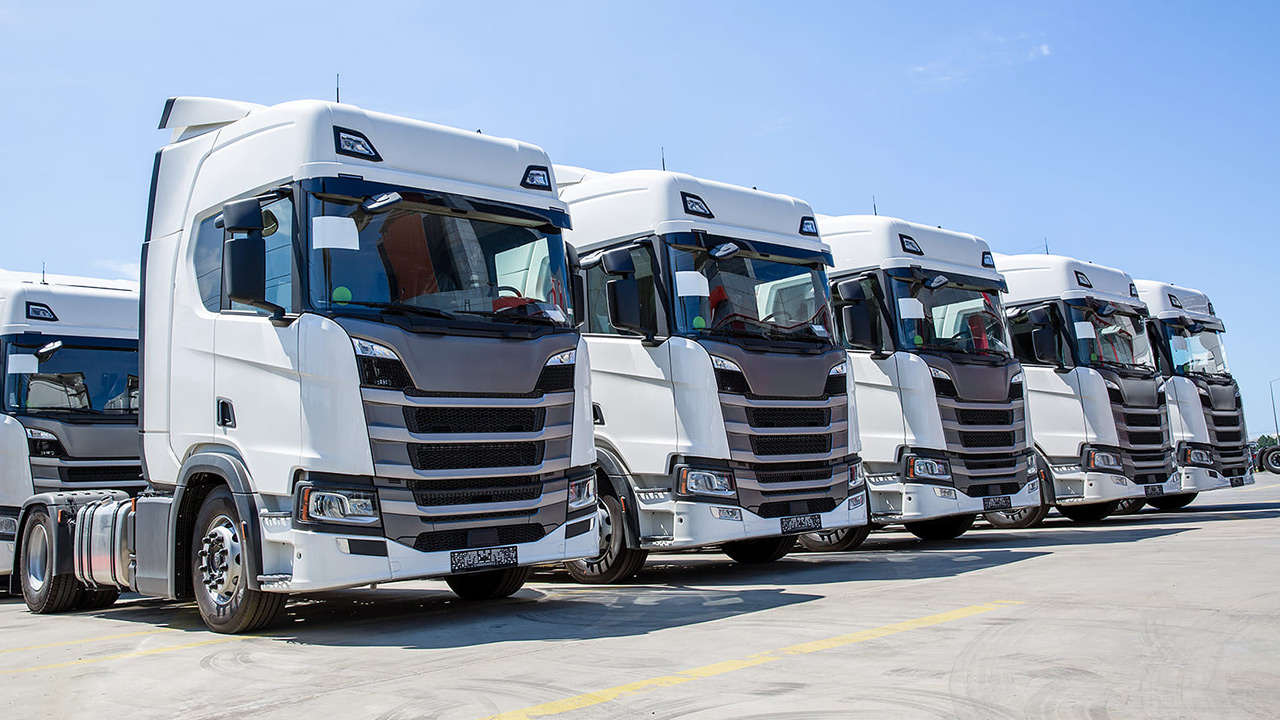Fleet automation is rapidly becoming a baseline expectation in modern commercial fleet operations, country by country, market by market.
It’s important to make a clear distinction early on: fleet automation doesn’t mean self-driving or autonomous vehicles. Instead, it refers to using connected technologies, data-driven insights, and smart processes to reduce manual effort and improve decision-making.
For companies managing vehicles and assets, automation delivers measurable results: it cuts operational costs, boosts efficiency, enhances driver safety, and ensures regulatory compliance. These outcomes directly affect profitability and competitiveness, making automation a core business driver rather than a nice-to-have.
For chief technology officers, operations managers, and business decision-makers exploring digital transformation in fleet management, understanding and applying these principles is essential, as it enables fleet-adjacent leaders to align their organizations with achievable results.
For telematics service providers, automated fleet management presents both a challenge and an opportunity. The challenge lies in meeting evolving client demands with solutions that scale. The opportunity is to position themselves as strategic partners in digital transformation — not just as GPS tracking vendors.
This article examines the challenges and opportunities of automated fleet management and how telematics service providers can leverage them to strengthen their business.
Evolving client expectations and the shift toward automation-first fleets
According to Vantage Market Research, the global fleet telematics market was valued at $26.2 billion in 2022 and is projected to reach $75.7 billion by 2030 — nearly tripling in just 8 years. This surge reflects a direction: as the industry grows, so does the expectation for smarter automated solutions.
In line with this growth, fleet operators are increasingly moving away from manual tracking and reactive management approaches. They are seeking automated, proactive solutions that simplify operations and reduce costs. Clients now expect integrated platforms that don’t just show vehicle locations but provide insights and advanced analytics.
This applies not only to equipping existing fleets but also to the expectations around new fleet deployments. When companies build new fleets today, they increasingly expect vehicles to be tracked and automated from the start.
As of 2025 the following features are firmly among those expected by default:
- Automated alerts for unwanted events, such as fuel theft, harsh driving, or unauthorized trips.
- Maintenance scheduling and notifications.
- Route optimization engines that adapt to traffic conditions and other factors in real time.
- Compliance reporting tools that automate third-party reporting, whether for governmental compliance or other regulatory requirements.
Naturally, any conversation around automation must address data privacy and security. Fleets generate large amounts of sensitive information: vehicle locations, driver behavior, cargo details, and more. In many regions, regulations and client expectations leave no room to ignore this, even for organizations reluctant to face it.
The current landscape of expectations has created a new benchmark. For telematics service providers, offering just location tracking — or sticking with basic features only for too long — is no longer enough.
Instead, automation is the differentiator that determines long-term competitiveness both for your clients and for your telematics business.
Aliaksandr Kuushynau
Head of Wialon
Designing scalable fleet automation services: Key things service providers must consider in 2025
To succeed in today’s market, service providers must look beyond one-off implementations. The guiding principle is to design services with long-term growth in mind. This means solutions that not only scale with clients but also address several critical factors listed below.
- Customer service as a cornerstone
Automatic fleet management is crucial, but it has to be part of a broader strategy. Fleets need strong support, clear onboarding, and ongoing guidance. More complex systems also require thorough documentation, training, and continued support for clients to realize their full value. As outlined in our recent trend report, for many businesses customer service is now just as important as technology when choosing a telematics service provider. - Modular service design
Instead of overwhelming clients with full-scale automation suites, providers should consider offering modular packages. An entry-level package might focus on compliance management and fuel monitoring, while more advanced clients can expand into predictive maintenance, AI-driven safety tools, or integrations with ERP systems. - Partnership mindset
Fleet automation is not a single project. Fleet owners want long-term partners who will grow with them. Successful providers position themselves as advisors, helping clients plan for expansion rather than offering one-time installations. - White-labeling and brand strategies
For new providers, brand positioning is critical. A world-renowned brand such as Wialon can be a powerful asset, signaling trust and reliability to customers. At the same time, white-labeling automated fleet management solutions lets providers deliver proven technology under their own brand.
Operational challenges in delivering automation — and how to solve them
Experienced service providers know that delivering automation to diverse fleets is far from straightforward. The obstacles extend beyond technology, into operational habits, legacy processes, and human factors. The most common challenges include:
- Diversity across devices, OEMs, and vehicle models. Fleets often run mixed vehicle models, from heavy-duty trucks to passenger cars. Providers must ensure broad hardware compatibility, especially with OEM-installed telematics units.
- Varying levels of digital maturity. Some clients run paper-based systems, while others already use cloud-based tools. Providers must adapt onboarding processes to different starting points.
- Legacy setups. Older fleets or systems with deeply embedded processes require careful migration strategies.
- Resistance to automation. Drivers or managers may fear job disruption or monitoring. These concerns often stem from worries about increased oversight, potential job insecurity, or lack of clarity on how automation changes daily routines. Providers can address this by framing automation as a tool for safety, fairness, and efficiency — not as a means of punishment. Educating clients to take the same approach internally helps reinforce adoption and long-term success.
For example, Wialon helps overcome many of these obstacles by supporting thousands of devices out of the box and offering open APIs and SDKs for flexibility in integrating with legacy and modern systems alike. Finally, many fleet automation challenges can be addressed through a collaborative Wialon community that shares best practices, which helps reduce complexity for both service providers and their clients.
The Wialon community is the largest professional community of telematics and fleet automation specialists from all over the world. Photo: Wialon community reunion in Brazil
Making automation part of your service delivery
For telematics service providers, fleet automation begins with embedding practical features that deliver immediate value, such as:
- Automated alerts and reporting reduce manual oversight.
- Dispatch and routing systems adapt in real time to traffic or delivery delays.
- Compliance checks are digitized, replacing paperwork.
- Scheduled maintenance prevents breakdowns and reduces costs.
- Safety workflows incorporate driver scoring and coaching.
For example, a local delivery fleet might start its automation journey with simple GPS tracking and automated alerts, then move to route optimization to reduce fuel and time costs, and later add scheduled maintenance and driver reward systems. Over time, integration with compliance and ERP systems creates a fully automated, insight‑driven operation.
How far should the service providers look beyond the basic features, though?
The business model shift: From GPS tracking to fleet management solutions
Telematics services are moving beyond basic GPS tracking toward sophisticated, insight‑driven tools.
Affordable entry‑level options with essential features will continue to serve parts of the market, helping companies stay compliant and efficient. But for providers aiming to grow and avoid commoditization in 2025 and beyond, the real opportunity lies in differentiating with advanced, customized offerings tailored to client needs and industry niches.
In this context, for service providers, upselling is key.
Over time, businesses relying on basic, affordable telematics services often realize the need to take the next step in fleet digitalization. At some stage, they become ready to move beyond entry-level functionality.
While providers can accelerate this journey, the key is to anticipate demand and offer additional capabilities on top of the existing solution, positioning themselves as a solutions architect helping fleets transition to more intelligent systems.
Clients no longer see telematics as a one-time investment but as a continuous journey toward smarter operations. Providers that can map this journey and offer incremental value at each stage will be more likely to secure longer-term contracts.
What future service providers should know: Entering the market with fleet automation at your core
For service providers entering the telematics market in 2025, fleet automation must be the foundation of their offering. Here are some practical entry strategies we’ve been seeing among our newest partners:
- Start lean. Focus on one vertical or niche with high automation potential, such as urban logistics or public transportation.
- Position clearly. Many potential clients are still in the early stages of their digital transformation. New providers must pitch automation as a business enabler — cutting costs, reducing risks, and improving performance. Using business outcomes rather than technical details helps clients understand the real value of fleet automation solutions.
- Build partnerships. Rather than developing everything in-house, leverage the community of hardware makers, integrators, and developers, and position yourself as both a strategic and technology partner for your clients.
And this is precisely where the Wialon community has become a global driver of innovation. By connecting solution providers, hardware manufacturers, software developers, and connectivity companies, Wialon supports the design of scalable, competitive automation services while maintaining flexibility across industries and fleet types.
But for providers already operating in the market, the key question is how to strengthen their position and elevate their role as a telematics service provider. How exactly can they do that?
What the most successful providers are doing differently in fleet automation
To see how these strategies translate into real-world success, it’s useful to look at concrete examples where Wialon partners have combined hardware, software, and creativity to deliver impactful projects for automated vehicle management.
Learn how a project of digitalizing Eskişehir’s fleet of 320 buses, delivered by a Wialon partner, led to pilot initiatives and planned deployments in other Turkish cities due to its success
In Dushanbe, Tajikistan, the Smart City initiative partnered with Sarfaroz, a Wialon partner, to modernize the public transport system. The solution combined Wialon with carefully chosen hardware and custom-developed software to enhance safety, cut fuel misuse, and improve passenger satisfaction. Beyond technology, Sarfaroz provided training, certification, and comprehensive support, proving that additional services make a decisive difference in long-term project success.
In Eskişehir, Turkey, Filozof, a long-time Wialon partner, implemented a full-scale digitalization of the city’s bus fleet. What made the project stand out was not only the technology — real-time tracking, driver monitoring, fuel control — but also the narrative around driver engagement. Instead of penalties, the municipality introduced a reward system for drivers, boosting morale while reducing accidents and operational costs.
An Estonian transportation company faced severe losses from fuel theft across Europe. CarCops, a Wialon partner, developed a custom Wialon-powered hardware-plus-software solution using infrared sensors to create an invisible curtain guard around fuel tanks. The system prevented theft attempts and paid for itself almost immediately. This case illustrates how some providers go beyond software and deliver bespoke hardware solutions to meet unique client challenges.
Together, these stories demonstrate that the most successful providers are those who move beyond standard implementations, adding layers of value through services, innovative approaches, and customized solutions.
Trends shaping automated fleet management
Building on these shifts in business models and client expectations, several major trends are now shaping the next stage of fleet automation:
- AI in decision support. From predictive maintenance to risk profiling, AI transforms raw data into actionable insights.
- Video telematics integration. Cameras are no longer separate tools but core automation components, tied into safety and compliance systems.
- Interoperability. Fleets want unified ecosystems where telematics, ERP, and dispatch tools work seamlessly together.
- Providers as strategic advisors. (Yes, we repeat this once more because this is the key to success.) Much like ERP vendors, telematics service providers are evolving into trusted advisors, guiding business strategy as much as technology deployment.
To make the most of these trends, service providers should actively monitor them, align their offerings accordingly, and translate emerging capabilities into practical solutions for clients. This means not only keeping up with innovation but also helping customers adopt and benefit from it in a structured way.
To understand the current trends, it’s important to be engaged in industry events. From specialized conferences such as Telematics & Connected Mobility to international tech shows such as GITEX, Wialon shares trend knowledge worldwide
Wialon as a foundation for competitive fleet automation services
The move toward fleet automation is not slowing down anytime soon. For telematics providers, automation is both a business opportunity and a survival strategy. Clients demand efficiency, cost savings, safety, and compliance — and automation delivers on all these fronts.
For telematics service providers looking to stay competitive, we suggest the following: build automation into your service model, position yourself as a strategic partner, and leverage the strength of a global ecosystem. With the right foundation, you can deliver exactly that.
Wialon, as automated fleet management software, offers the ecosystem and flexibility needed to build these scalable services. It allows telematics service providers to embed automation into their offerings without reinventing the wheel.
Ready to get started with Wialon? Get in touch with us at sales@wialon.com. Looking for a reliable telematics service provider? Check the Wialon partner map and pick the expert in your region.
Subscribe to our blog and follow us on LinkedIn, Facebook, and Instagram to stay updated on more insights from Wialon.




.jpg)
